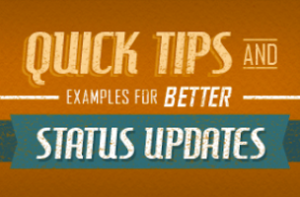 If the number one thing on which PR people are judged is our reporter rolodex, grammar and spelling savvy ranks a close second. Make sure you don’t fall prey to some of these common mistakes:
If the number one thing on which PR people are judged is our reporter rolodex, grammar and spelling savvy ranks a close second. Make sure you don’t fall prey to some of these common mistakes:
No. 1: Your & You’re
“Your” is possessive, as in “your client” or “your press release,” when “you’re” is a contraction of “you are.” A handy tip: When in doubt, insert that phrase (you are) into the sentence, and use it if it still makes sense.
No. 2: Its & It’s
Same idea here – “its” is possessive, as in “the early bird got its worm,” whereas “it’s” is a contraction of “it is.” Try the same swap in a sentence – you wouldn’t say, “the early bird got ‘it is’ worm,” right?
No. 3: Numbers
According to AP Style, numbers one through nine should be written out, and figures should be used for 10 and above. (Bonus: When writing percentages, always use numerals with the word “percent,” not “%.”)
No. 4: Fewer & Less, More Than & Over
Use “fewer” with things you can quantify (e.g. fewer than 10 pieces of coverage), whereas “less” is used with hypothetical quantities (e.g. Their launch was less successful than ours). Along those same lines, “more than” is used with numbers, where “over” generally refers to spatial elements (e.g. She sent more than 25 tweets; I positioned the logo over the text in the document).
No. 5: Complement & Compliment
To “complement” something is to add to or supplement it (e.g. That color really complements your complexion), whereas a “compliment” is an expression of praise or admiration (e.g. That color looks great on you!).
No. 6: Into & In To
The word “into” answers the question, “where?” - although it doesn’t necessarily need to be a physical place (e.g. I walked into my office). The words remain separate when they happen to show up next to one another in a sentence (e.g. My boss came in to see me).
No. 7: E.g. & I.e.
The abbreviation e.g. is Latin for “exempli gratia,” meaning “for example.” The abbreviation i.e., on the other hand, stands for the Latin “id est,” meaning “that is to say.” Here’s an example: “We like social media—e.g., Facebook, Twitter, LinkedIn.” Or you might write, “We like social media—i.e., we’ve made a point of connecting with others.”
No. 8: That & Who
Always use “who” when referring to people. Otherwise, if you say something like, “employees that are present today in the office,” you’re referring to them as objects.
No. 9: Affect & Effect
“Affect” means “to influence” (e.g. This heat is affecting my ability to concentrate), whereas “effect” is a result (e.g. The heat has had an effect on productivity levels in the office).
No. 10: Alot & A Lot
Trick question! “Alot” is not a real word, so always be sure you separate the two. And, when in doubt, try to replace it altogether with a number or something like “many” or “ample” to sound more professional.

 It’s undeniable that social networks are embedded in our daily lives.
It’s undeniable that social networks are embedded in our daily lives.  Do you want to know how to dramatically improve your social media response rates? Write better tweets and status updates. Shea Bennett
Do you want to know how to dramatically improve your social media response rates? Write better tweets and status updates. Shea Bennett  Newsletter creation can be remarkably challenging for even the most prolific writer. After all, your newsletter has some lofty goals: get through spam filters, attract readers’ eyes, get opened, get read, get click-thrus, convert to a lead, and if all the stars align – result in a sale. Phew!
Newsletter creation can be remarkably challenging for even the most prolific writer. After all, your newsletter has some lofty goals: get through spam filters, attract readers’ eyes, get opened, get read, get click-thrus, convert to a lead, and if all the stars align – result in a sale. Phew!  The key to being a good consultant of any kind is to ask the right questions, writes Michael Teitelbaum in a recent post at Marketing Trenches, and provides a list of
The key to being a good consultant of any kind is to ask the right questions, writes Michael Teitelbaum in a recent post at Marketing Trenches, and provides a list of 